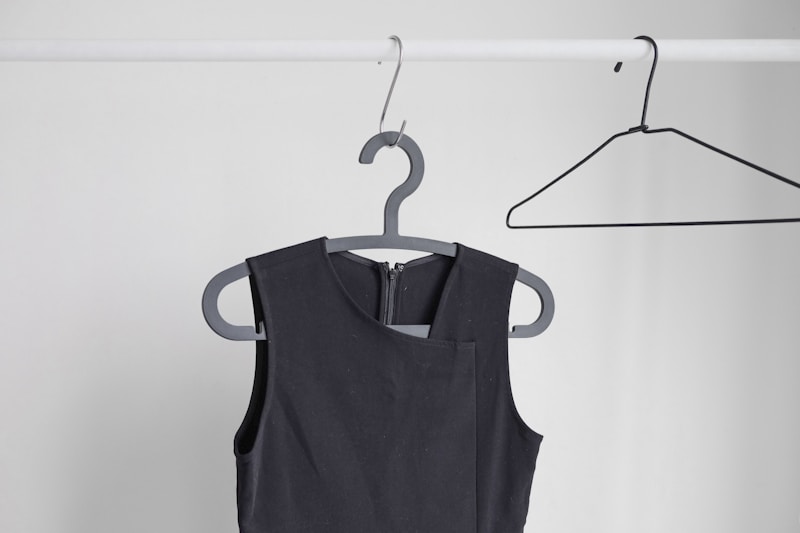Mixing and Matching Sashes with Dress Designs: A Comprehensive Guide
Introduction to Sashes in Dress Design
In the world of fashion, sashes play a crucial role in enhancing the elegance and style of various dress designs. Whether you're attending a wedding, prom, or any special event, knowing how to effectively mix and match sashes can elevate your outfit. This guide will explore the nuances of combining sashes with different dress designs, thereby helping you make informed fashion choices.
What are Sashes?
A sash is a long strip of fabric worn around the waist or draped over the shoulder of a garment. Sashes can serve both functional and aesthetic purposes, adding definition to a silhouette while also introducing color and texture. Commonly found in formal dresses, casual wear, and even bridal gowns, sashes are versatile accessories that can transform your look.
Why Mix and Match Sashes?
Mixing and matching sashes with dress designs allows for creativity and personal expression. By experimenting with colors, patterns, and styles, you can create a unique look that stands out. Here are a few reasons why you should consider mixing and matching sashes:
- Creative Expression: Fashion is an art; mixing sashes invites innovation.
- Personal Style: Craft a style that truly reflects your personality.
- Versatility: A single dress can achieve multiple looks with different sashes.
- Cost-Effective: Renew your wardrobe without purchasing new dresses.
Choosing the Right Sash for Your Dress Design
While mixing and matching sashes can be fun, it's essential to consider some fundamental guidelines to ensure a cohesive look. Here are key factors to take into account:
| Dress Type | Sash Recommendations |
| A-Line Dress | Wide or embellished sashes to accentuate the waist. |
| Ball Gown | Heavy, fabric-rich sashes for a grandiose appearance. |
| Sheath Dress | Thin or minimalist sashes to maintain a streamlined silhouette. |
| Maxi Dress | Flowy and colorful sashes that complement the movement of the dress. |
| Shift Dress | Textured or patterned sashes to add dimension and interest. |
Color Combinations: Finding Harmony
One of the most challenging aspects of mixing and matching sashes is color coordination. To create a visually appealing ensemble, consider the color wheel and the following tips:
- Complementary Colors: Colors that are opposite on the color wheel, such as blue and orange, provide a striking contrast.
- Analogous Colors: Colors adjacent to each other, like green and blue, create a cohesive and harmonious look.
- Monochromatic Schemes: Different shades of the same color give a polished and sophisticated vibe.
- Neutral Base: Pair vibrant sashes with neutral dresses for a balanced look.
Patterns and Textures
In addition to color, pattern and texture play essential roles in mixing sashes with dress designs. Here are a few suggestions:
- Solid vs. Print: A solid sash can work wonders with a printed dress, creating a focal point.
- Textures: Layer various textures—for example, a silk dress with a velvet sash adds richness.
- Stripes and Florals: Combine patterned sashes with simple dress designs for a playful effect.

Practical Tips for Mixing and Matching Sashes
Implementing these ideas requires some practical strategies. Here are some actionable tips for successfully mixing and matching sashes with your dress designs:
- Try Before You Buy: If possible, always try the sash with your dress before making a purchase.
- Experiment at Home: Play around with different sashes in front of a mirror to find the best combinations.
- Ask for Opinions: Getting feedback from friends or family can provide new perspectives and ideas.
- Accessorize Wisely: Keep other accessories minimal to let your sash and dress be the focal points.
- Pay Attention to Proportions: Ensure the size of the sash is proportional to your body and the dress style.
Common Mistakes to Avoid
Even seasoned fashion enthusiasts can make mistakes when mixing and matching sashes. Here are some common pitfalls to avoid:
- Too Many Patterns: Avoid overcrowding the look by mixing multiple patterns that clash.
- Ignoring Fabric Weight: Pairing a heavy sash with a light dress can look mismatched.
- Not Considering the Occasion: Always think about the event’s formality when choosing sashes.
- Neglecting Personal Comfort: Ensure the sash feels comfortable and allows for movement.
Conclusion
Mixing and matching sashes with dress designs offers endless possibilities for enhancing your unique style. By understanding the fundamentals of color theory, pattern mixing, and practical application, you can create stunning looks suitable for any occasion. As you explore this creative avenue, remember to keep your personal style and comfort in mind.
In summary, mixing sashes is not just about fashion but also about self-expression. Don’t hesitate to experiment with different combinations, as personal style often comes from taking risks. Happy styling!
Final Thoughts: Embrace the art of mixing and matching sashes to refine your wardrobe. Empower yourself with the knowledge shared here and transform your fashion choices into reflections of your individuality!